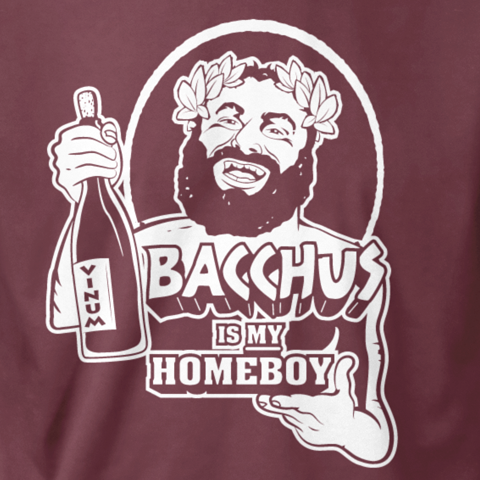 This week we're moving off the normal marketing, economy, and business issues and asking a basic question anyone working in the US wine business should know:"Where was the first successful commercial winery in the United States?" Do you know? I confess I didn't know for sure. I remember thinking Jefferson was a really important figure in American wine and he worked at establishing a commercial presence in Virginia early on, so maybe Virginia was first? Surely with the native vines in existence, there must have been a successful wine businesses established before the time of Jefferson?
This week we're moving off the normal marketing, economy, and business issues and asking a basic question anyone working in the US wine business should know:"Where was the first successful commercial winery in the United States?" Do you know? I confess I didn't know for sure. I remember thinking Jefferson was a really important figure in American wine and he worked at establishing a commercial presence in Virginia early on, so maybe Virginia was first? Surely with the native vines in existence, there must have been a successful wine businesses established before the time of Jefferson?I had this debate over a bottle of wine with someone smarter than I last week. The discussion of "firsts," depending on where you live and who is telling the story can change dramatically, so the interwebs - which everyone knows is the possessor of all that is true - can sometime provide false information. The reality is the real beginning of the US Wine business has been butchered in history books and folk-lore. There is however a definitive rendering of the subject.
If you haven't ever read A History of Wine in America, I highly recommend spending the time to do so. I've even linked a free Google e-book to the above title so you have no excuse. The book sheds a bright spot light on the subject and will have you the envy at your next party where you win the attractive table centre piece for getting the right answer. That said, I know many of you are Cliff Notes kind of people and wont spend time in the book, so if you want the shortcut to the answer, read on.
The history of US winemaking started as a fight between native varietals
 |
| Native Grapes, Norton |
Some bullet points of early winegrape growing and winemaking:
- Grapes that can be used to make wine have been on the Continent of North America since before Leif Erikson discovered America in the year 1001. Seeing abundant vines he proposed to name the new country Vinland.
- Paris Island in South Carolina is favored as the likely first place wine was made on the Continent in the
year 1568 by Spanish colonists but that's not a commercial success.East Coast in 1640 - Dr Laurence Bohune is the first winemaker whose name is known. He made wine from Native grapes in the year 1610 in the Jamestown settlement.
- In 1672 Charles Calvert, the proprietor of Maryland laid out 240 acres of vines using a 'hogshed' of vines from Europe. The vineyard died the next year and as many other vineyardists at the time, suffered from the success of the tobacco industry which pulled people and resources away from wine experimentation.
- Robert Beverly (b.1673 d.1722) was one of the largest of Virginia landowners and in 1705 wrote the first comprehensive history of Virginia, including the planting of his estate which he named Beverly Park.
- In no colony before the Revolution was there any enterprise that systematically grew and harvested grapes, and then crushed them for wine outside of a few individuals who had modest production.
- The first successful commercial winery in New York was founded in 1839 at Washingtonville on the Hudson. Its still in existence today under a successor name.
The first successful American wineries using vinifera grapes were established in drier conditions in El Paso in the New Mexico Territory. The region produced up to 200,000 gallons as early as 1846, but sadly that business died out soon thereafter for many reasons including the California Gold Rush which led to a massive migration west ..... that people component again closed out that business.
California's history books suggest the wine industry started with the Spanish Missions through Father Junípero Serra in 1769, but the first clear reference to the planting of grapes at a California mission comes from San Juan Capistrano in 1779; ten years after the arrival of the Franciscans in California. Besides, the secularization of the Spanish Missions in Texas and California in 1833 led to the nearly complete demise of mission wine production by 1844. So its hard to call that the start of commercial winemaking in the United States.
| Mission Espada Chapel, Weches Texas |
General Vallejo who presided over the secularization of the Mission at Sonoma in 1835 has been given perhaps a little too much credit over the years in advancing the cause of US wine production in the North Coast of California, as he inherited his vines and replanted to some non-mission varietals, but produced only about 540 gallons of wine in total.
 |
| Image from a L.A. Wine Company 1876 |
| Wine Festival In Vevay, Indiana |
Here is the definitive wording from A History of Wine in America for all those who want to suggest another solution to the question:
That's it then. Indiana of all places. Go figure? As a final footnote, you probably noticed A History of Wine in America has 2 volumes. The first volume is the beginning to Prohibition and the second volume is from Prohibition forward. I've only used Volume 1 in this blogpost, but if you're interested in reading that, here is the Google e-books link: Volume 2.
So .....how did you do on the poll? I can tell you for a fact neither I nor my smarter friend got the right answer in our debate. I thought for sure it had to be in New York, Virginia, or maybe Texas if the US meant the land encompassing the current US and included the then possession of Spain.
Log in an offer your thoughts. How did you answer the poll and why?
















